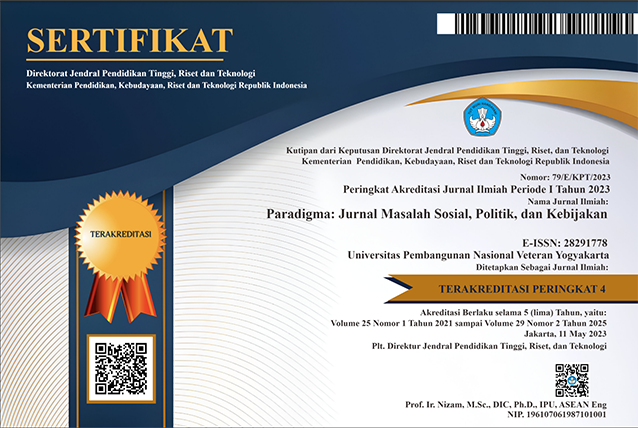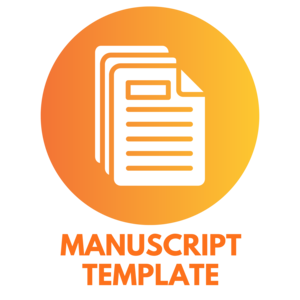UPACARA ADAT TIWAH MASYARAKAT DAYAK DI KALIMANTAN TENGAH
DOI:
https://doi.org/10.31315/paradigma.v22i2.6597Keywords:
semiotic analysis, bone removal, tiwah ceremonyAbstract
This research is to know how the meaning of bone removal procession on Tiwah in
Central Kalimantan and to know what is contained message in the procession of bone
removal, this reasearch is done by doing semiotic analysis on the symbols and signs that
are in procession. The type of this research is qualitative interpretative by using semiotic
analysis method, semiotics is a science that examines the sign. Data collection on this
reasearch using observation techniques , study of literature, interview and documentation.
The technique to knowing the meaning of the bone removal process is by analyzing the
signs present in the procession. Based on the results of the research we know that, the
procession of bone removal on tiwah has a very deep meaning for life. This procession
showing the affection and caring from dayak society to their relatives and a hope to have
a better life. There is a myth like Roland Barthes says there is a myth but the truth are still
unknownable the truthness. the myth of bone removal after performing ritual removal of
bone is a prayer and a hope that has been presented to the Creator.
Downloads
Published
How to Cite
Issue
Section
License
The manuscript submitted to Paradigma: Jurnal Masalah Sosial, Politik, dan Kebijakan journals are released under the license of Creative Commons Attribution-Non Commercial- ShareAlike (CC BY SA) if and when the article is accepted for publication.
We declare that:
- This paper has not been published in the same form elsewhere.
- It will not be submitted anywhere else for publication prior to acceptance/rejection by this Journal.
- A copyright permission is obtained for materials published elsewhere and which require this permission for reproduction.
Retained Rights/Terms and Conditions
Authors retain all proprietary rights to the published works, such as (but not limited to) the following rights:
- Copyright and other proprietary rights relating to the article, such as patent rights,
- The right to use the substance of the article in own future works, including lectures and books,
- The right to reproduce the article for own purposes,
- The right to self-archive the article
The right to enter into separate, additional contractual arrangements for the non-exclusive distribution of the article's published version (e.g., post it to an institutional repository or publish it in a book), with an acknowledgment of its initial publication in this journal Paradigma: Jurnal Masalah Sosial, Politik, dan Kebijakan




